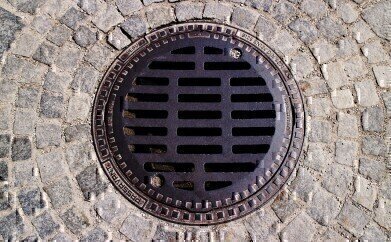Water/Wastewater
Can COVID-19 Be Monitored in Wastewater?
May 12 2020
Research from Arizona State University (ASU) in America is investigating the possibility of quantifying the level of infection of coronavirus at both a local and international scale by analysing sewage. Known as wastewater-based epidemiology (WBE), the technique examines samples taken from sewage to identify the existence of viral genomes, among other tell-tale signs of disease or disorder.
If successful, the method could significantly reduce the time and expense involved in testing whole communities, thus dismantling the logjam that is currently forestalling adequate diagnoses of populations across the globe. What’s more, it could also be used to safeguard vulnerable communities from the spread of the virus by implementing more robust social distancing policies where necessary – and lifting them where not.
A new world
After the success of last year’s PEFTEC 2019 conference in Rotterdam, it could hardly be imagined that one of the biggest topics on the environmental agenda less than 12 months later could be a devastating but invisible killer. COVID-19 has so thoroughly taken over our lives that one third of the global population is currently experiencing some form of lockdown measures, including the entirety of India’s 1.3 billion populace.
With well over 3.5 million documented diagnoses of the disease and more than 250,000 deaths caused by coronavirus (including over 191,000 cases and more than 32,000 deaths in the UK alone), finding a way to contain its spread is of paramount concern. The ASU study may just have struck upon an important if unorthodox method of doing so.
Test, test, test
It’s almost two months since the chief of the World Health Organisation Dr Tedros Adhanom Ghebreyesus urged countries everywhere to “test, test, test” as the most effective method of controlling the pandemic. But while his words might be wise ones, the practicalities of testing large populations on an individual basis are slow and expensive, making it unfeasible in many nations around the world.
As such, WBE could provide a fast and cost-effective alternative to that laborious process. By breaking down the problem into more manageable chunks, governments could screen sections of their population in isolation, thus contributing greater knowledge about virus hotspots and facilitating its tracking and control.
Devil in the details
But while WBE can help the world's utility companies cope with COVID-19, the authors of the study are quick to point out that it is not perfect. Results may vary wildly depending upon the seasonal temperature of the sewers, the average amount of time that samples spend travelling through them, the degradation levels of the specific biomarkers involved, the demographics of the community and the amount of water each individual in it uses.
However, the study authors believe that even in the worst-case scenario, testing could be reduced to 1 in 114 individuals, while a best-case outcome could see it detect one positive corona patient in 2 million subjects. “We can in one go monitor an entire community for presence of the new coronavirus,” explains Olga Hart, co-lead author on the paper. “However, tradeoffs exist. To get the best results and avoid loss of information, we want to measure close to virus hotspots and take into account wastewater temperature and dilution when estimating the number of infected cases.”
Events
Apr 24 2024 Sao Paulo, Brasil
May 05 2024 Seville, Spain
May 13 2024 Munich, Germany
May 23 2024 Beijing, China
May 23 2024 Beijing, China













